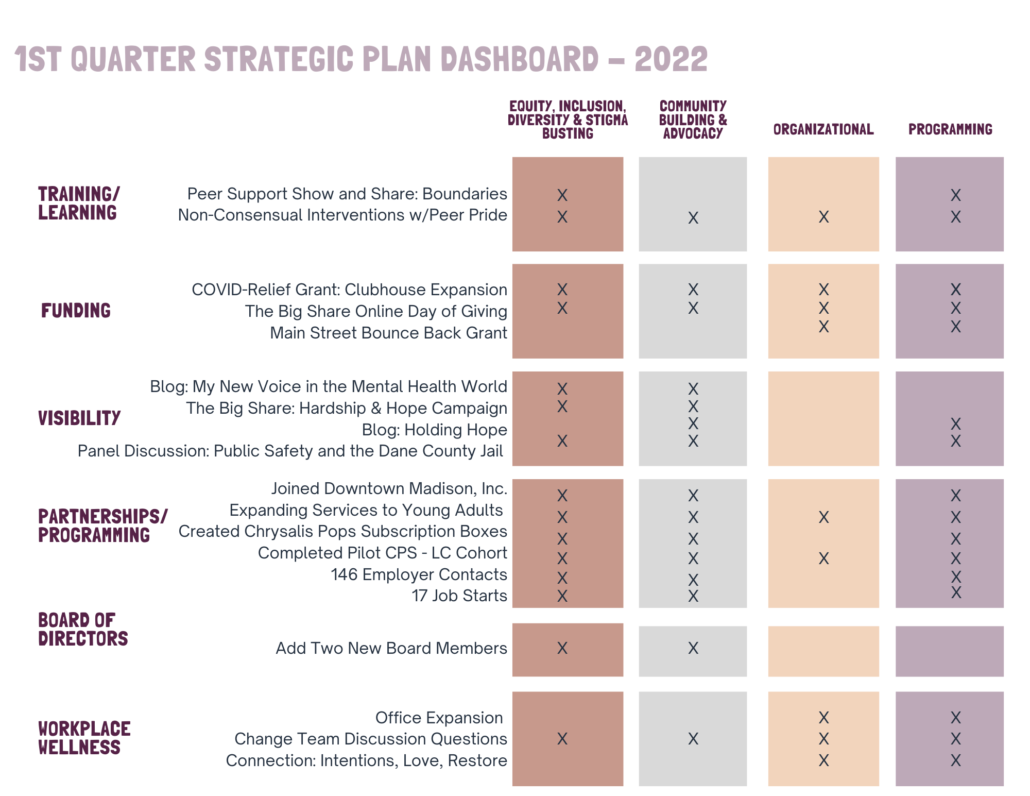By Amy and Erik
November 8th, 2022 is ELECTION DAY! Voting can be a confusing and sometimes intimidating experience. Clubhouse Member Erik and Chrysalis Staff Person Amy Y teamed up to answer some common voting questions! Both Amy and Erik have worked the polls on Election Days and hope to provide some guidance and support to the process! It’s most important that those who want to vote know how, have access to voting, and feel empowered to cast that ballot!
Q: Where do I register and how?
A: You can register to vote at any library or at the City Clerk’s Office at 210 Martin Luther King Jr. Boulevard or online at: myvote.wi.gov. You can also register to vote at your polling location on the day of the election. Use the link to make sure you bring any required documents! Polling place workers are super friendly and really want to help you! Head into your polling location and they will walk through each step with you.
Q: Where do I vote?
A: You can find your polling place by visiting myvote.wi.gov. Polling locations are often in community centers, local organizations like churches, and schools. Sometimes polling locations change so it’s always good to look up your location before you leave!
Q: Can someone help me vote?
A: Yes! All polling locations are ADA accessible and have various forms of accessible voting technology. You may bring someone with you to assist you with voting, they just need to sign in that they are helping you. All polling locations must comply with your request to vote curbside as well if you’re not able to leave your vehicle. The Chief Inspector at each polling location is there to make sure you have full access to voting and that all poll workers understand your rights. If you feel there is an error, make sure to speak to the Chief Inspector!
Q: What if I forget my ID?
A: If you’re registering to vote for the first time, you will need a photo ID and proof of residence (i.e. a utility bill, a bank statement, a government document, etc.). You will not be able to register without this document. If you are registered and forget your ID, you can still cast your ballot but it won’t be counted until you return with your ID. Poll workers will share all of your options to show your ID for this Provisional Ballot option.
Q: What time do polls open?
A: Polls open at 7:00 am and stay open until 8:00 pm. If you are in line to vote at 8pm, you are eligible to vote!
Q: Where do I vote if I’ve recently moved?
A: If you have moved in the last 28 days before election day, you will need to register and vote at your previous address. If you have lived in your dwelling for more than 28 days before election day, you will vote at your new location.
Q: How can I support the election?
A: There are many ways to support local elections. You could be a poll watcher to make sure the process is smooth and fluid. Find opportunities for future elections here: https://myvote.wi.gov/en-us/Become-PollWorker.
Q: Are there resources to get to the polls?
A: Yes, Union Cab and many others will provide free cab rides to the polls for those who need them. Find a complete list of transportation assistance here: https://disabilityvote.org/rides-to-polls/
Q: Any tips if I’m anxious to vote?
A: Just take a deep breath and realize that voting isn’t really that hard but new things can be scary and intimidating. If you have any questions about voting, the Chief Inspector at the polls is the best resource to get information and feedback about voting. Both Amy and Erik have seen how friendly and supporting the volunteer workers are! They are there to make sure that you have full access to voting. You can also talk to people that support you in your life. Like we said above, you can have someone help you vote and support you to get to and from the polls!
Q: Any other voting tips?
A: People who make a plan to vote, vote more solidly because they remember how they decided to cast their ballot and when they plan on voting. It’s too easy for the day to get busy and all of sudden you’ve forgotten to vote! Making a plan on when you’re going to vote will help reduce the chances that you forget!














